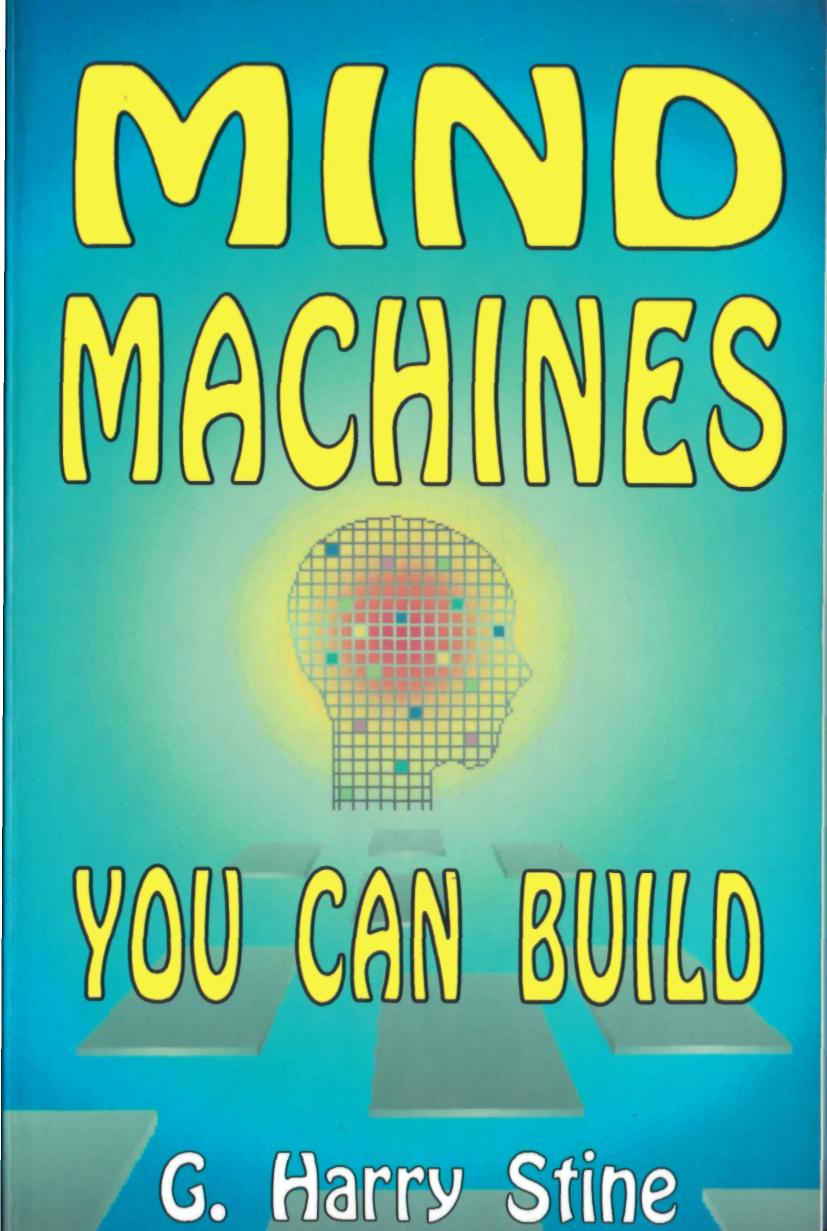
- •11701 South Belcher Road, Suite 123
- •Introduction
- •Introduction
- •Chapter one
- •Chapter two detector rods Basic Description:
- •Chapter three
- •Chapter four the energy wheel Basic Description:
- •Chapter five pendulums Basic Description:
- •Inside an inverted water tumbler as shown.
- •Chapter six
- •Basic Description:
- •Chapter seven
- •Chapter eight
- •Basic Description:
- •Integrated circuit amplifier board for the
- •Chapter nine
- •Chapter ten postscript
- •Bibliography
- •11701 South Belcher Road, #123

YOU CAN BUILD
by G. Harry Stine
TOP OF THE MOUNTAIN PUBLISHING Largo, Florida 34643-5117 U.S.A.
All rights reserved. No part of this book may be reproduced, utilized or transmitted in any form or by any means, electronic or mechanical— including photocopying, recording on any information storage and retrieval system—without written permission from the publisher, except for brief quotations or inclusion in a review.
Top Of The Mountain Publishing
11701 South Belcher Road, Suite 123
Largo, Florida 34643-5117 U.S.A.
SAN 287-590X
FAX (813) 536-3681
PHONE (813) 530-0110
Copyright 1992 by G. Harry Stine
Library of Congress Cataloging in Publication Data
Stine, G. Harry (George Harry). 1928-
Mind Machines you can build/by G. Harry Stine.
p. cm.
Includes bibliographical references.
ISBN 1-56087-016-8: $11.95
1. Machinery. I.Title.
TJ153.S774 1992
133.028-dc20 91-27801 CIP
Manufactured in the United States
TABLE OF CONTENTS
Introduction
5
THE REALIST'S DILEMMA
9
DETECTOR RODS
21
PYRAMIDS
37
THE ENERGY WHEEL
61
PENDULUMS
83
THE HIERONYMOUS MACHINE
103
SYMBOLIC MACHINES
125
THE SYMBOLIC HIERONYMOUS MACHINE
143
THE WISHING MACHINE
165
POSTSCRIPT
181
BIBLIOGRAPHY
195
Devoted
to
Patsy and Clyde
Introduction
The intent of this book by my friend and colleague Harry Stine is to challenge the technical community and amateurs to build these machines, then try to figure out why they work. All of them seem to violate the well-known laws of physics or mechanics. Thus, the challenge is to resolve the apparent contradiction.
In the history of science, the resolution of a discrepancy is one of the most fruitful ways to make progress. For example, it was Rutherford who saw an apparent contradiction in the course of his study of alpha particle emission by radioactive nuclei. He asked how it was possible for an alpha particle of measured range and energy to emerge from a nucleus without having the energy to penetrate the higher energy potential barrier around the nucleus - which could also be measured. Such penetration by an alpha particle was energetically
5
impossible. It was the challenge of this apparent discrepancy that led Gurney and Condon to the discovery and development of quantum mechanical tunneling which has been of major importance not only in physics but also to modern solid-state electronics.
In science, one progresses from an observation to a hypothesis about how or why the observed phenomenon works, then to an experiment in which one proves not only that the hypothesis is correct but that the hypothesis is indeed a theory. The theory must then predict other observable effects that can be tested and experimentally confirmed. The fact that a certain device in this book works does not mean that all our theories are wrong but only that our understanding of how these theories should be applied is faulty in this particular case. Essentially, we do not know everything. Indeed, what we do know may not be so, but may have some curious little twist that we have overlooked. Apparent violations of the laws of physics are usually an opportunity to make progress in our knowledge of the universe.
In science, we also seek to understand how nature works. And we often misunderstand or follow false leads. Actually, the "laws of nature" are generalizations from experience. For example, the violation of the law of gravity is punished not by a jail sentence but more fittingly by falling on one's face. Further, such generalizations are living concepts needing modification in details as we go alone. Einstein did not prove Newton to be
6
wrong but rather provided the next approximation in our understanding of what actually happens when we make measurements at speeds approaching that of light. Mass, length, and time must be measured, taking the speed of light into account. A basic physics experiment is that of measurement, and it is important to carefully think through the details of the actor procedure in a step by step fashion.
Science is a living and growing discipline, and much remains to be done. This book will, one hopes, stimulate people to build and test these odd devices, to think about them, and perhaps to hit upon further approximations to our understanding of the universe. Good science is done not with apparatus but in people's heads by thinking.
- Prof. Serge A. Korff
(Prof. Korff was professor emeritus, department of physics, New York University; Fellow, American Physical Society; past president and life member, New York Academy of Sciences; life member, American Society for the Advancement of Science; past president and director, the Explorers Club; and Chevalier of the Legion of Honor.)
7
Mind Machines You Can Build
8
